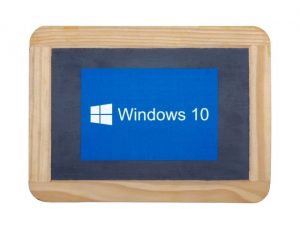
The latest desktop buzz is about Windows 10, the new operating system from Microsoft that’s free to those who have Windows 7 or Windows 8.1. A lot of theories are going around about how Microsoft plans to monetize its software now that the company is giving it away.
Will it be a subscription like Office 365, will it go the advertising route or will it charge for extras, like playing Solitaire? It could very well be any of these options or all but one thing is certain; Microsoft needs to make money from its new and improved operating system.
That’s easier said than done, but one of the classic splits in PPC advertising is the difference between desktop advertising and mobile PPC. It’s true that there are significant differences due to the form factors involved. Desktops have more space like laptops, but Microsoft has been trying to move its Windows users to a more mobile-like experience for a while. It tried to do it with Windows 8 and Windows 8.1 and pushed too hard. It was too much change, too quickly and the user base rebelled.
Good mobile PPC requires the creation of seamless experiences. Standard desktop PPC acts much like old want ads. That’s not to say they don’t work well. Desktop PPC still delivers more clicks than mobile or tablet PPC, but that difference is shrinking. Mobile PPC, in contrast, requires much more thought about how to design ads as part of the overall experience of an application. Screen space is precious on mobile phones. Every pxiel counts.
Will Microsoft start converting its desktop advertising to a more mobile-like experience, is just a speculation, but Microsoft does hint on that on the front page of their Ads-in-Apps page, "Not just ads. Experiences".
Bing and Cortana are baked directly into the browser and OS. You probably already know about Bing, Microsoft’s search engine and ad platform, but Cortana is new. Cortana is Microsoft’s answer to Apple’s Siri. It is a personal assistant software baked into the operating system, Microsoft’s new Edge browser, and a new ecosystem of apps that run on Android and iOS that can connect to Cortana.
Since Bing is also baked into Edge for search (though it can be changed), and Cortana uses Bing to search as well, it’s just one small step for a Cortana request to include a PPC ad or two through Bing Ads. Indeed, Bing Ads General Manager David Pann posted a blog post talking about how query volume gains are expected to rise 10 to 15 percent by September from new users and existing users of Bing, likely from Cortana requests. And that’s not to mention the additional impressions from Windows applications. Microsoft states that it generates about 8 million impressions a month from Microsoft Apps across PCs and tablets.
At this point, Google, excuse me, Alphabet better watch out. Microsoft is really gunning for advertising dollars. But if you’re an advertiser, especially a mobile one, then you can’t ignore Bing or Windows app ads any longer.
With Windows 10, Microsoft doesn’t have to worry about how Windows phones were a flop. Instead, they’ve delivered an advertising platform right to every person who clicks that upgrade button. Plus, if Cortana starts offering up ads in cross-platform applications, then they have an advertising wedge into nearly every smartphone on the planet.
If Microsoft’s goal is to bust down the barriers between desktop, tablet, and smartphone experiences, and it does seem to be that way, then Windows 10 is a heck of a good start, at least for advertisers. Time will tell how user reaction to the new interface now and over time will affect their computing and PPC habits.
Nick Jakubowski is part of the Adficient SEO Services team.
Published under license from ITProPortal.com, a Net Communities Ltd Publication. All rights reserved.
Photo credit: tanuha2001 / Shutterstock

